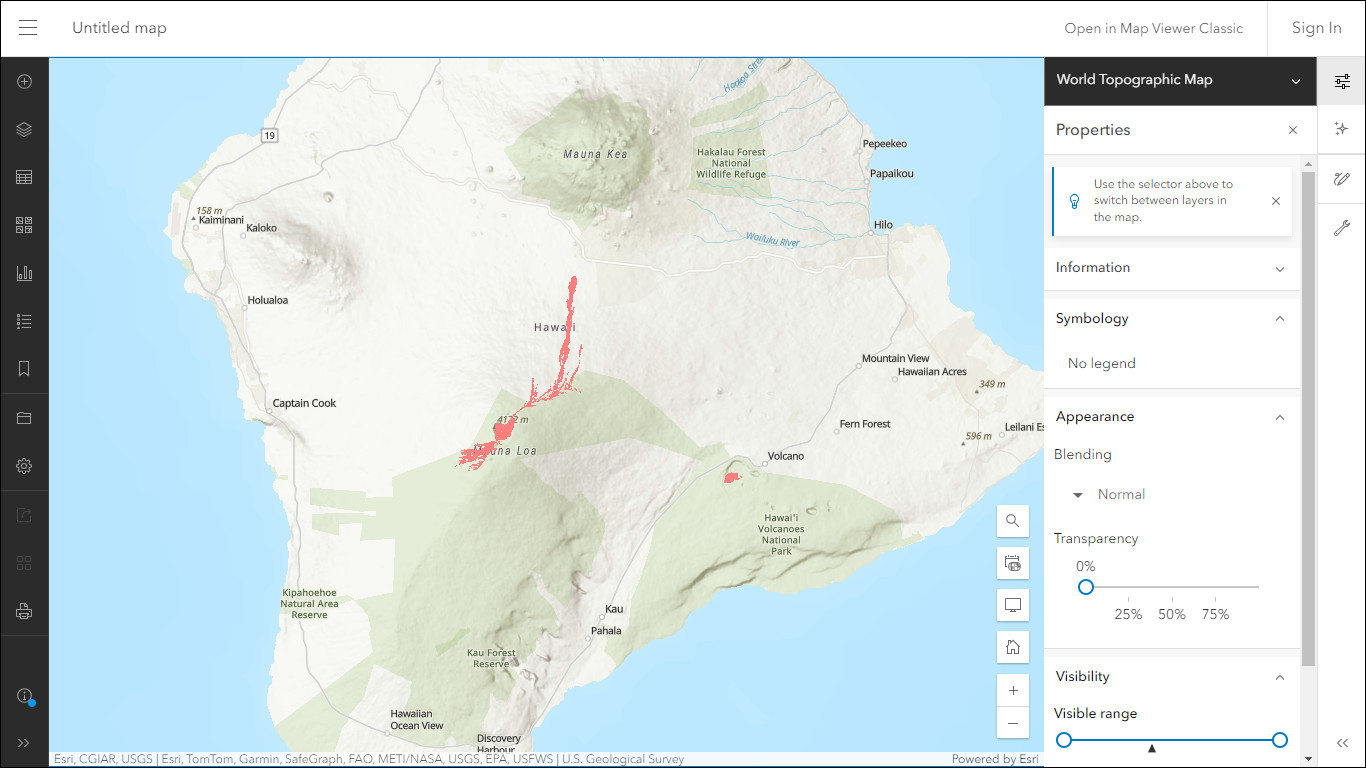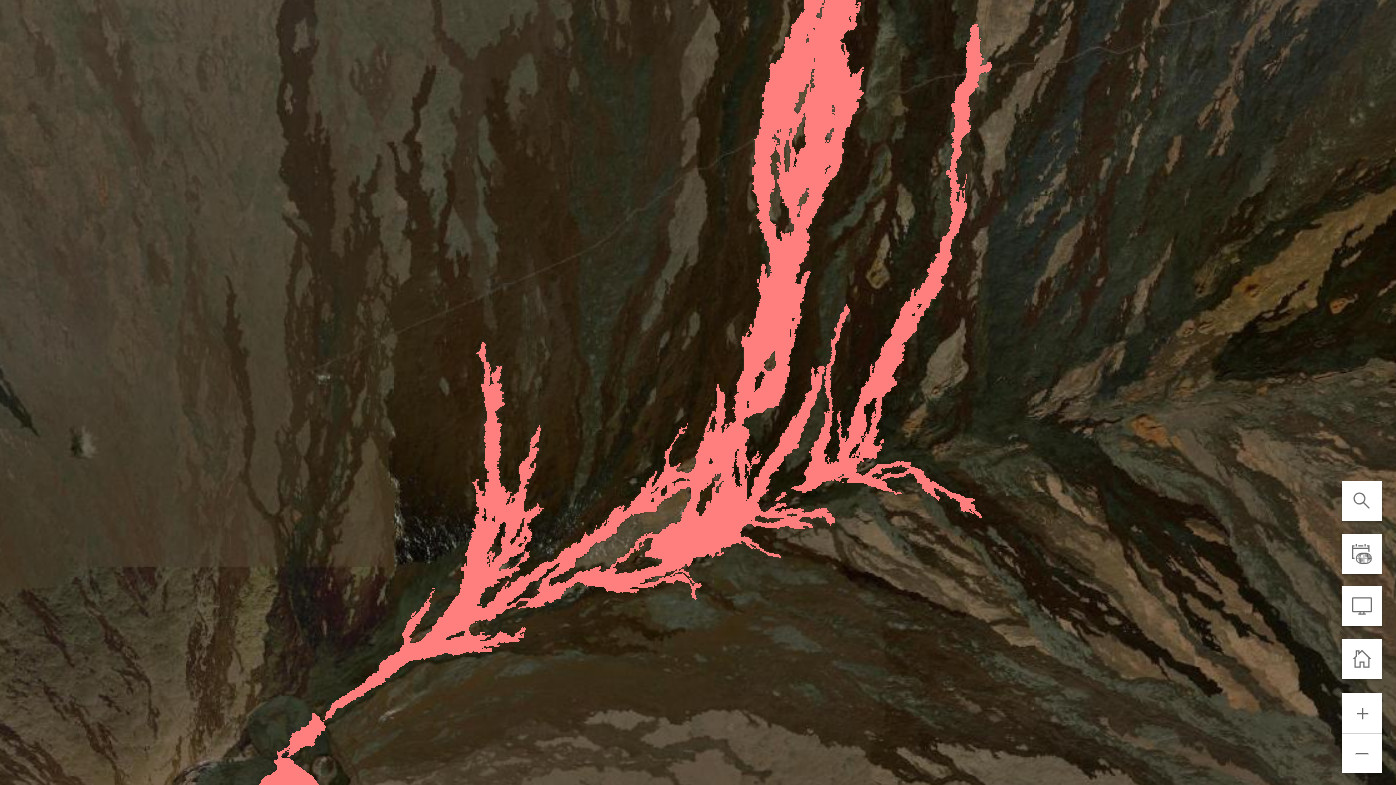(BIVN) – The latest Volcano Watch article introduces a new online eruption map that could be used to track the next lava eruption in “near-real-time”.
From this week’s article written by HVO geologist and GIS analyst Mike Zoeller:
The production of maps to track the progress of ongoing eruptions has long been part of the USGS Hawaiian Volcano Observatory (HVO) mission to inform the public about volcanic hazards in Hawaii. The methods used to collect, interpret, and disseminate map data have been evolving ever since HVO’s founding in 1912, and a digital tool newly available to the public continues that legacy of innovation.
The new digital tool is an interactive, browser-based display of map data that can be updated in near-real-time with eruption features, such as lava flows. During the Island of Hawai‘i’s most dramatic eruptions in recent years—in 2018, at Kīlauea, and in 2022, at Mauna Loa—static eruption maps have been released semi-daily as image files posted to HVO’s website. However, there was always a desire to provide a more dynamic, near-real-time digital representation of the data, hence the creation of the web map.
During the 2022 Mauna Loa eruption, HVO was preparing to release a web map very similar to the present one, but the eruption ended before it could be rolled out. Still, map data were provided to the Hawaii County Civil Defense Agency (HCCDA) for inclusion in their web map, so it was available to the public during the eruption.
After 2022, USGS geographic information systems (GIS) specialists worked to optimize HVO’s web map and prepare it for use during future eruptions. A system was developed for data to flow from its collection at the eruption site to the web map via the cloud, with filters applied to vet the map for accuracy and release.

Screen capture of the “Eruption Response Web Map”
It should also be noted that the USGS normally does not allow unpublished data, we only release web maps that have been formally published, which is not possible during a fast-paced eruption response. However, the USGS Fundamental Science Practices allow groups—like HVO—to rapidly distribute critical data when responding to hazardous situations. Permission for a public web map was granted based on eruptions like those in 2018 and 2022 providing clear evidence for the need of such a product in advance of the next event.
The advantage of a public ArcGIS Online web map is that it can be opened by anyone in a web browser. The included dataset—known as an ArcGIS web layer—can also be loaded into users’ custom web maps, or into specialized GIS software like ArcGIS Pro. Map features in the dataset are only viewable to the public, not editable.
Within the web map and web layer, there are five sub-layers of map features: FlowPolys (polygon shapes depicting lava flow boundaries), EruptiveFissureLines (lines depicting the traces of eruptive fissures), EruptiveVentPoints (points depicting more localized eruptive vents), FlowFrontPoints (points marking lava flow fronts, in the absence of more complete polygon mapping), and FlowChannelLines (lines depicting the traces of lava flow channels). Users can toggle each of these sub-layers on and off to aid in different displays of the map features.
The web map went online back in March to be ready for the next eruption, but most of the sub-layers are currently empty, with the intention that map features will be populated when a new eruption starts at any of Hawaii’s volcanoes. One exception is the FlowPolys sub-layer, which includes polygon features for lava flows from the 2020–2023 Kīlauea summit and 2022 Mauna Loa eruptions. These are provided as placeholders and to help users contextualize future lava flows on the map.
In addition to providing a more interactive display of map features than the static maps posted to HVO’s website—which will still be produced regularly during eruptions—the new web map is intended to accelerate the distribution of critical data to key stakeholders. That of course includes the public, as well as partner agencies during eruption responses: HCCDA, the state-level Hawaiʻi Emergency Management Agency, and Hawaiʻi Volcanoes National Park.
To access the new ArcGIS Online web map, please visit the HVO website at usgs.gov/hvo, where it is linked as the “Eruption Response Web Map” under “Quick Links.” Stay tuned for further developments, because there are plans to add the data to the interactive map on the HVO website homepage in the near future.


by Big Island Video News10:19 pm
on at
STORY SUMMARY
ISLAND OF HAWAIʻI - The interactive map data can be updated in near-real-time with eruption features, such as lava flows, scientists say.